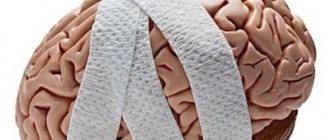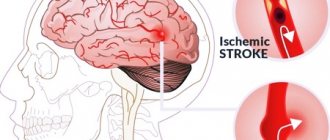Now mnemonics for memory development are used everywhere: in kindergartens, schools, universities, trainings, educational courses. Many believe that these are the latest techniques to avoid senility and excessive forgetfulness. However, few people know that this is an ancient Greek word (derived from the name of the goddess of memory Mnemosyne) and a science that Aristotle, Giordano Bruno, Alexander the Great, Julius Caesar, and Napoleon Bonaparte were fond of. So what are these methods of memorizing information, how effective are they in practice, and how to master them?
What it is
Mnemonics, or mnemonics, is a science that teaches the art of memorization using certain techniques and methods. Its task is to improve memory through associations. She rejects rote learning, which has already shown its ineffectiveness. Which adult remembers Tatyana's letter to Onegin by heart? Units! And all because this information has no significance for the majority and is not tied to objects or sensations.
Mnemonics is a technique for memorizing information when various objects and facts are closely associated with ideas in a person’s head. They can be visual, auditory or kinesthetic. This simplifies the memorization process and increases memory capacity. The simplest example: from childhood, everyone remembers the order in which the colors in the rainbow are located, thanks to the saying about the hunter and the pheasant. The initial letter of each color is associated with the initial letter of the words in that phrase. This is one of the main techniques of mnemonics. In this way, any information can be imprinted in memory.
In mnemonics, two objects of memorization are used - numbers and words. Even if the task is to remember a picture, it must first be mentally transformed through associations into a list or some kind of phrase.
Difficulty remembering
Source
The secret is that the brain changes gradually. In some studies[], the first noticeable result was achieved after six weeks of training, and a noticeable improvement in memory was observed four months after the start of training. Memory itself is not that important - what matters is how effectively you think at a certain point in time.
Our brains are not particularly adapted to the modern information age. Our distant hunter-gatherer ancestors didn't have to memorize a curriculum, follow instructions verbatim, or network by memorizing the names of dozens of strangers on the fly. They needed to remember where to find food, which plants were edible and which were poisonous, how to get home - those vital skills on which life literally depended. This is probably why we absorb visual information relatively well.
At the same time, long-term studies and perseverance will not give the expected result if the mnemonics being mastered are not simple enough. In other words, a memory enhancement technique should easily associate important information with a picture, sentence, or word. In this regard, the method of loci, in which landmarks along a familiar route become information you need to remember, is not always suitable for beginners.
Mnemonics techniques
To understand the basics of mnemonics, you first need to get acquainted with its main tools - techniques that allow you to remember almost any information.
By initial letters
We have already seen one example of this technique above. Used if you need to remember several words in a certain sequence (colors in a rainbow, planets by distance from the Sun). Their initial letters are taken and a phrase is invented that is completely unrelated to their topic, but the words in it begin with the same letters. When you need to reproduce information, you first remember the composed sentence, which serves as an excellent hint. There are ready-made templates for similar phrases for each individual sequence (examples will be below), but you can create your own.
Rhymes
Rhyming as a mnemonic technique is suitable for developing memory in creative people who love poetry and successfully rhyme words. Or you can use already prepared templates, as in the previous case.
Consonances
When you need to remember complex, long terms or foreign words, simple and understandable consonances are invented for them and stored in memory. For example, in medicine there are the concepts of “supination” and “pronation”, which refer to movements of the hands in different directions. In order not to forget them, students, future doctors, are offered similar sound equivalents - “she carried soup and spilled it.”
Visualization
A technique based specifically on visual associations. To remember any information, a certain picture is created in the head. For example, it’s easier for women to learn car brands: Jaguar is a big wild spotted cat, Audi is wedding rings, etc. This technique is especially good for developing visual memory.
Visual associations
Spatial imagination
The famous method of Cicero, which once again proves how ancient science mnemonics is. A person who puts this technique into practice treats his own memory as a separate space. It could be a museum, a library, storage facilities, or just a room. It has many shelves, chests, and compartments. It is recommended to present the memorized information in the form of an expensive vase or an ancient scroll and put it away in a certain place. When you need to reproduce it, an invented association arises in your mind, and it can be “extracted” from one or another suitcase without any problems.
Visual memory
A widely used method by Aivazovsky, which involves memorizing details. Another mnemonic technique that works to develop primarily visual and even photographic memory. One of the exercises is to closely but imperceptibly look at your interlocutor and then accurately reproduce him from memory, down to every button and mole.
Digital algorithms
These techniques are designed primarily to develop the memory of scientists and people associated with the exact sciences. Due to the nature of their work, they have to memorize long formulas and numbers. This can be done quite easily if you find some patterns or correlate them with familiar, memorable dates.
Palace of Memory
The Cicero method, the Roman room or the method of loci are names of the same mnemonic device based on the construction of a memory palace. After its creation, a person can remember large amounts of information (numbers, words, etc.) in a certain sequence. A memory palace is a kind of space with certain static objects that a person can recreate in his imagination. It sounds difficult, but in reality it is much easier than it seems. Try closing your eyes and imagining your kitchen or your workspace. Happened? Consider that you have already done the bulk of the work on designing a simple memory palace. In this article you will learn how to build a memory palace, how to use it, and what mistakes to avoid. Read more…
4
Methods
Since mnemonics did not appear yesterday, it includes various techniques, each of which offers the use of its own methods of memorizing information and memory training. Beginners may find them too complicated. In fact, if you understand their algorithm and master at least one, it will greatly simplify your life. We bring to your attention some of the most famous mnemonic systems.
Alphanumeric alphabet
The abbreviated name is CBA. Author unknown.
A technique according to which each number is associated with a specific letter through visual or auditory association. There are clearly written alphabets that need to be memorized and put into practice. You can create your own.
Alphanumeric code
The abbreviated name is BCC. The author is V. Kozarenko, a well-known specialist in mnemonics, who has written many textbooks on it.
The system of memorization and memory development proposed by Kozarenko is similar to the previous one. But here, first you just need to memorize the correspondence between numbers and paired consonant letters without any associations, and then use them in life. His BCC looks like this:
- 0 — m/n;
- 1 - g/f;
- 2 - d/t;
- 3 - farm;
- 4 - h/sh;
- 5 — p/b;
- 6 - sh/l;
- 7 — s/z;
- 8 - v/f;
- 9 - r/ts.
How to use. For example, you keep track of your income and expenses, you spent 2,056 rubles in a store, and you need to remember it in order to record it at home. You come up with a word that has a consonant corresponding to each number, and make a sentence out of them. 2 - children, 0 - ice cream, 5 - ice cream, 6 - chocolate. The children ate ice cream, it was ice cream and chocolate. There is no need to set a goal to come up with something conscious and logical. The more unusual the phrase, the better it will be remembered.
Other methods are also used in mnemonics:
- Fractional Number Code (FNC) - for those who deal with mathematics.
- Development of visual memory through visual associations. For example, each line of a memorized poem (a number in a formula) is “nailed” on a particular house (or tree) on the way to work or to the store and is repeated every time you walk along it.
- Method of auxiliary objects: if you put your finger on the Moon, you can understand whether it is growing or aging, depending on the resulting letter (P or S).
- Development of sound memory: chants (for learning Morse code), rhymes (“One Hundred Chinese Surnames”, Perelman’s dialogue about circles for memorizing the number Pi).
There are a large number of memory systems in mnemonics. You need to choose what suits you. If you have nothing to do with mathematics, KDC and Perelman’s dialogue are of no use to you. Look for those techniques that are relevant specifically to your life. Also focus on your memory type. You can first begin to perfect the one that prevails in you, and then develop the one that is worse.
Kinds
If you plan to use mnemonics, keep one important point in mind. This is a whole science that has developed over several centuries. It has a rich history of development and there are many directions in it. In the same books dedicated to this art, they are often intertwined with each other. The authors offer sets of exercises, some of which relate to folk techniques, others to the classics. Such heterogeneity leads to the absence of a system.
Don't step on this rake. Choose one of the areas in accordance with your goals, objectives and individual characteristics and master it first. If things go well, then continue practicing using a different method.
Folk
The techniques of folk mnemonics are familiar to most people, as they have become firmly established in their lives, and many do not even suspect it. These are those rhymes with exceptions to the rules that they learned at school, the phrase about the hunter and the pheasant with the colors of the rainbow that set the teeth on edge. Road signs on the street, symbols on a computer desktop, the alphabet - these are all codes for developing memory in order to better remember and reproduce the necessary information faster.
Acrostic
Someone comes up with their own systems for learning a foreign language or chemical reactions, telephone numbers or significant dates - all this reflects the essence of everyday, or folk, mnemonics.
Classical
This is the very first system of mnemonics that has come down to us in written form. It dates back to 86 BC. e. At that time it was an integral part of rhetoric. Speakers used it to deliver long speeches accurately and without hesitation.
One of the most striking examples is Cicero's method. His opponent was Quintilian; he advocated for those people who had poorly developed visual and associative memory and who could not use Cicero’s technique. Quintilian proposed other alternatives to storing information, but was unable to formalize them into a separate system. However, it was they who later became the basis for the development of pedagogical mnemonics.
Pedagogical
The antipode of classical mnemonics. It finally took shape only in the 16th century, thanks to the Cambridge University teacher P. Ramus. This direction was closer to ordinary people, so it became widespread. There was no need to make complex visual associations here. Her main techniques were:
- repeated reading of the text and repeating it out loud;
- taking notes;
- redrawing illustrations;
- play activities;
- creation of didactics.
Methods of pedagogical mnemonics are still used in the modern education system.
Circus
The second name is variety. A narrow circle of people (it all started with circus troupes) creates its own system for coding the material. Anything can be used: language, gestures, facial expressions, intonation. The task is to transfer information from the assistant to the performer so cunningly that no one notices. These techniques are now actively used by scammers, telepaths, and psychics.
Sports
Since 1997, mnemonics competitions have been held annually in Cambridge. This direction has special specifics. Each participant is a guru in a specific area. Some reproduce binary numbers from memory, others recite poems 300 pages long by heart. As a rule, the winners end up in the Guinness Book of Records. The best in their field are determined by two indicators: memorization speed and volume.
Modern
The main representative of this direction is the Giordano mnemonic system. It is quite complex, based on scientific research in neurobiology about the brain and memory as a higher mental function. Here are just some of its provisions:
- development of electrical (neural) memory;
- mental operation “Connecting images”;
- the concepts of “Memorization Meaning” and “Accurate Information”;
- associations consisting of a foundation and auxiliary elements;
- system of internal stimulation of the cerebral hemispheres;
- multi-level schemes of reference images;
- constant training of memorization skills.
Mnemonic rule for remembering the number of days in a month using your knuckles
Don't remember what happened 5 minutes ago? Our short-term memory is to blame for this. What it is and ways to improve it is in our separate article.
Associations
Working with associations helps in developing imaginative thinking, which is quite difficult for most people. This technique makes it possible to remember a variety of things by connecting them with each other. An important principle of mnemonics is to compare well-known things with those that need to be stored in memory.
If a person learns to quickly and correctly form associative connections, he will be able to qualitatively assimilate new information, developing the functioning of the brain.
A great way to keep your memory sharp is to work with opposite or completely different words. Training should take about half an hour, followed by a break of the same time. When resting, you should not watch TV or listen to music, as the brain needs proper rest.
Examples of practical application
Mnemonics are often used to memorize rules, formulas, and numerical values in various sciences. First of all, it's a great memory workout. Secondly, it is ideal for children to fully master the school curriculum in individual subjects. Those who were lucky enough to study with teachers familiar with these methods forever remembered the exception words in the Russian language, the Pythagorean theorem in geometry, and many other truths that ideally everyone should know by heart. If teachers do not have the skills to work with these techniques, parents can use them themselves to help their child learn.
Some of the most striking examples of mnemonic techniques in different academic disciplines will help you.
How to work with them. Almost all of them are based on the techniques of rhyming and consonance. So, all children need to do is memorize funny rhymes - and the rules themselves will be remembered almost for the rest of their lives. You'll see: they will read them to their grandchildren later.
Russian language
Mathematics
Other items
Similar techniques and methods of mnemonics exist for almost all academic disciplines and spheres of life:
- in music - to remember the sequence of notes;
- in traffic rules;
- in military affairs (formulas for hit accuracy taking into account side winds and target speed);
- in the transport sector (colors of navigation lights on board aircraft and ships);
- in telephony (numbers where numbers are replaced by letters corresponding to them on the telephone keypad).
Mnemonics are invaluable when learning a foreign language. It will make the task easier for schoolchildren, students, and adults. The OPSHACOM rule, for example, will make it much easier to understand and remember the canonical order of placing several adjectives before a noun in English.
Why is it important to train your memory?
Memory training allows you to increase brain activity, which affects a person’s physical and mental health.
High-quality assimilation of information will help:
- learn a foreign language;
- get a good and well-paid job;
- learn to analyze and assess the situation, make plans.
When memory decreases, blood supply to the brain decreases, and as a result, intellectual abilities decrease. In order for glucose to enter the brain cells, it is necessary to engage in intellectual and creative activity. Such energy exchange improves blood circulation processes, which has a beneficial effect on brain function.
With a decrease in intellectual load, the risk of developing Alzheimer's disease increases. To prevent this from happening, you should train your memory. Active assimilation of new information increases glucose consumption, which ultimately burns calories without turning into fat.
How to master
Firstly, you can take mnemonics lessons from specialists who are closely involved in applying its systems and techniques in practice. They can be found on the Internet: buy a training course, sign up for an online training, arrange lessons via Skype. There are a huge number of ways to master it.
Secondly, you can learn mnemonics yourself, at home. However, please note that this will be a longer journey than with a specialist. Some techniques may seem too complicated, and then there is a risk of giving up without developing your memory. Sometimes regularity and perseverance are not enough. When there is a teacher, there is a schedule of classes, assignments, etc. But here you only have to rely on self-discipline.
To learn mnemonics yourself, you need to start by choosing:
- directions (it is better for a beginner to choose folk or pedagogical, rather than modern or classical);
- the type of memory you will be developing;
- the technique that you can master best (rhymes, consonances, visual associations);
- the author's system in which you will work.
Next, you need to set aside a specific time for studying. It is best to do this immediately before bed. For beginners, these steps will be enough.
Main principle: visualization
In order to quickly and permanently remember information, it needs to be visualized. In other words, we should remember not the word “cat” itself, but its visual image.
The correct image should be:
- Volumetric . Imagine a cat. This could be your or your friends' pet, or a fictional cat that you have never seen before. It doesn't matter. Look at an imaginary cat. It should be just like the real thing, and not flat, like on a TV screen.
- Bright . In order for an image to remain in memory for a long time, you need to imagine it vividly. Your cat should be as memorable as possible.
Image from news.day.az
- Understandable . You must know exactly what word this image means.
Practice! Create visual images for the following words: cucumber, teacher, globe, fish, chair, luck, Pakistan.
Everything was fine until the last two words, right? How can you imagine an abstract concept or an entire state?
To solve this problem there is a method of free association . The first visual image you think of when you hear “luck” is free association. For example, a horseshoe is a symbol of good luck.
I associate Pakistan with very colorful buses that are typical for this country:
Image from commons.wikimedia.org
Important ! All associations are purely individual . If, in the case of the word “luck,” for example, instead of a horseshoe or clover, you imagine your Uncle Kolya, a very lucky man, so be it. Your associations may be strange and unusual. So even better.
Once you've learned to visualize words, it's time to memorize them. We'll look at several ways to do this.
For different ages
For preschoolers
Mnemonics are actively used by educators and speech therapists for the development of speech in kindergarten with the help of mnemonic squares and mnemonic tracks. First, the child must name what is shown in the picture (visual associations are triggered and at the same time the vocabulary is replenished). Then he composes sentences and entire stories using several illustrations at once (the grammatical speech is enriched). The most complex one in this chain is the mnemonic table, which helps a preschooler learn a full-fledged poem.
For school age children
The education system is the most fertile field for the use of mnemonics. In order to assimilate huge amounts of information on various subjects, consonance and rhyme will be useful for developing the memory of schoolchildren, examples of which are in the tables above. Starting from the age of 10, experts advise parents and teachers to gradually teach children the methods of Cicero and Aivazovsky. You can also use other exercises: creating your own language, developing cuneiform, password recall and others.
For adults
For the development of memory for adults, it is already too late to learn poetry in order to remember the sequence of cases in the Russian language. They need more complex techniques, working with numbers, visual and auditory detail of what is happening. The pinnacle of perfection will be mastering the Giordano system or at least trying to take part in the correspondence round of the mnemonics competition.
Rhyme
At school we were taught to memorize not long complex rules, but short rhythmic rhymes. This also works in adulthood. If you can’t rhyme the information you need, you can select lines and phrases rhythmically, and also combine them with the motive of your favorite song.
The technique is suitable if you need to remember a sequence of numbers that are not related to each other (for example, the number of a bank card or a friend’s car, a telephone number or a combination for an intercom).
Example:
We need to remember the phone number 151-46-63. The last number is three, so you need to find a rhyme for it, for example, “speak.” The result will be a rhyme like this:
“One, five, one, four, six, six, three. Do not tell anybody".
The best books on mnemonics
- Ziganov M. Mnemonics. Memory based on visual thinking.
- Zyablitseva M. A. Instant memorization techniques. Scout mnemonics.
- Kozarenko V. A. Mnemonics - memory development.
- Kurt W. Mnemonics.
- Sheikh-Zade Yu. R. Supermemory is an ancient technique of mnemonics.
If you are faced with the task of developing memory, be sure to use one of the areas of mnemonics. You can start with the simplest techniques, and then understand and master more in-depth and complex ones. You will be surprised at how much information you can own and use it to your advantage.











